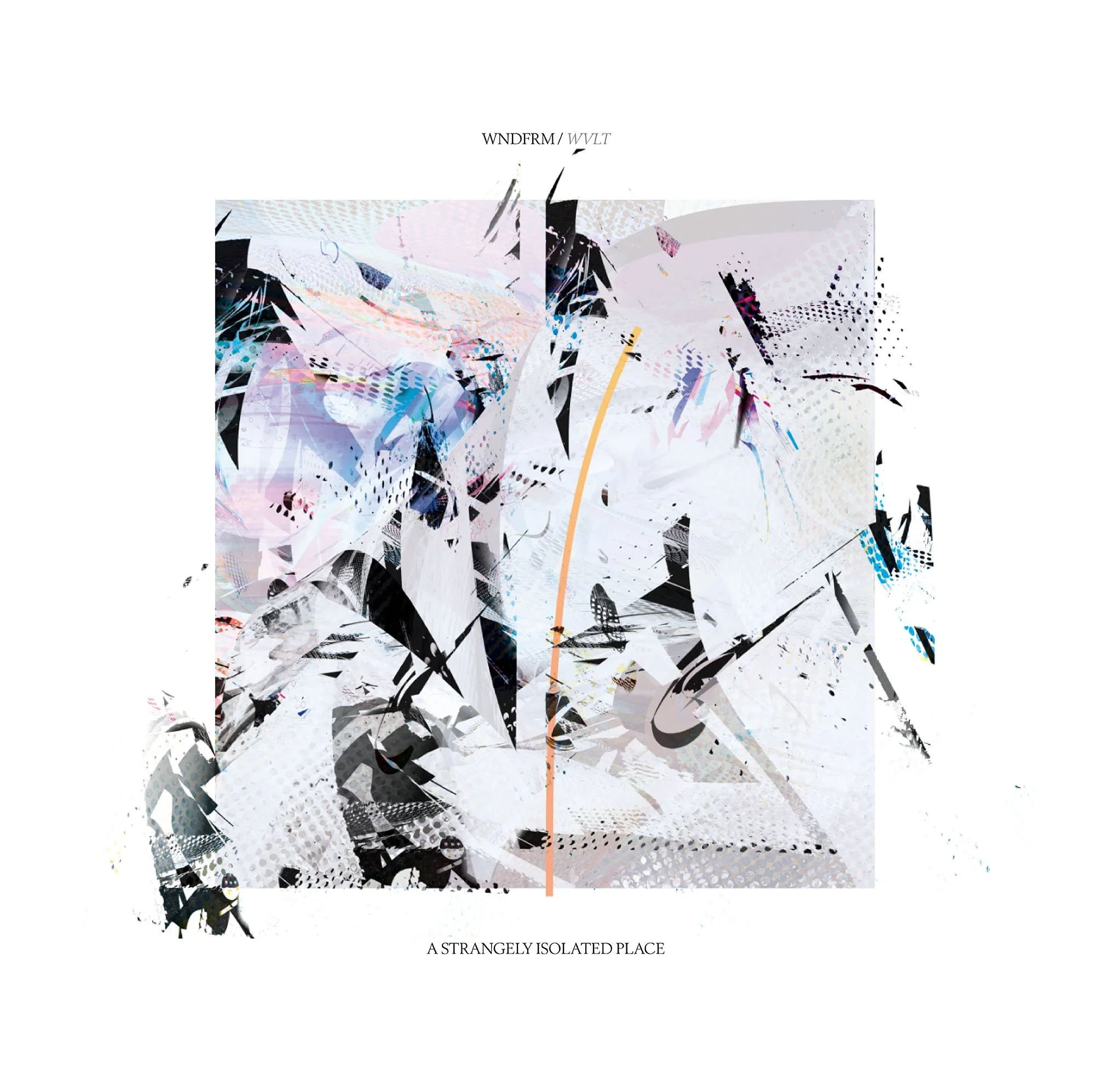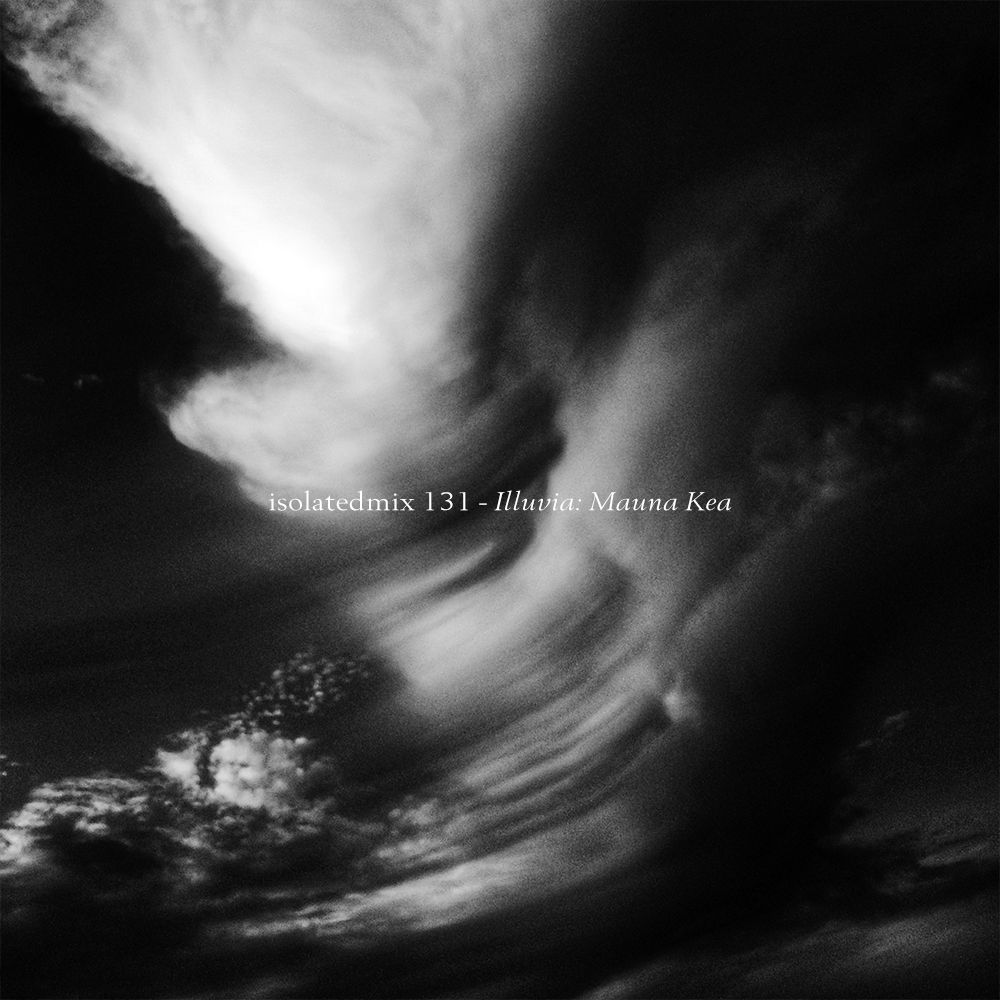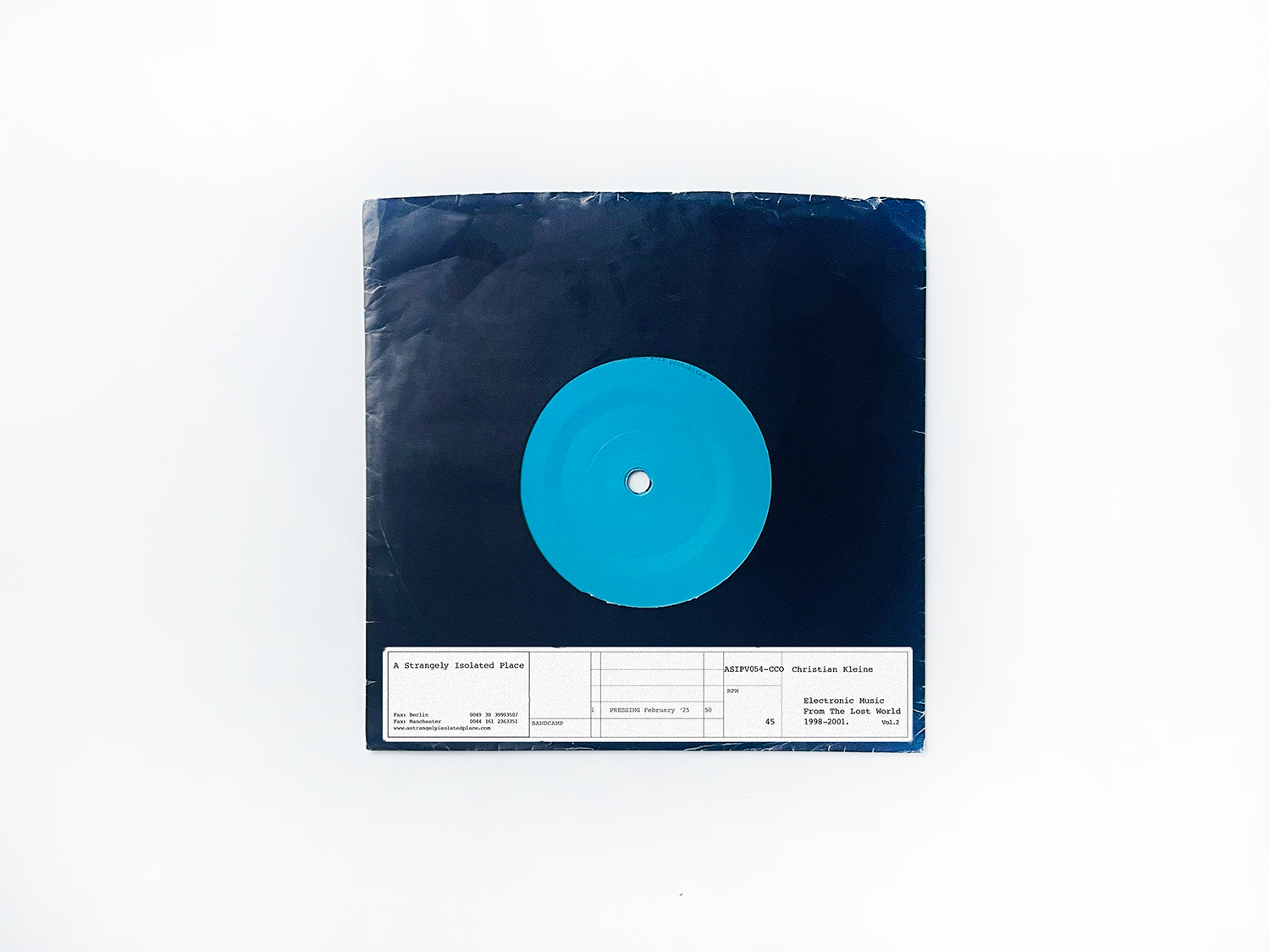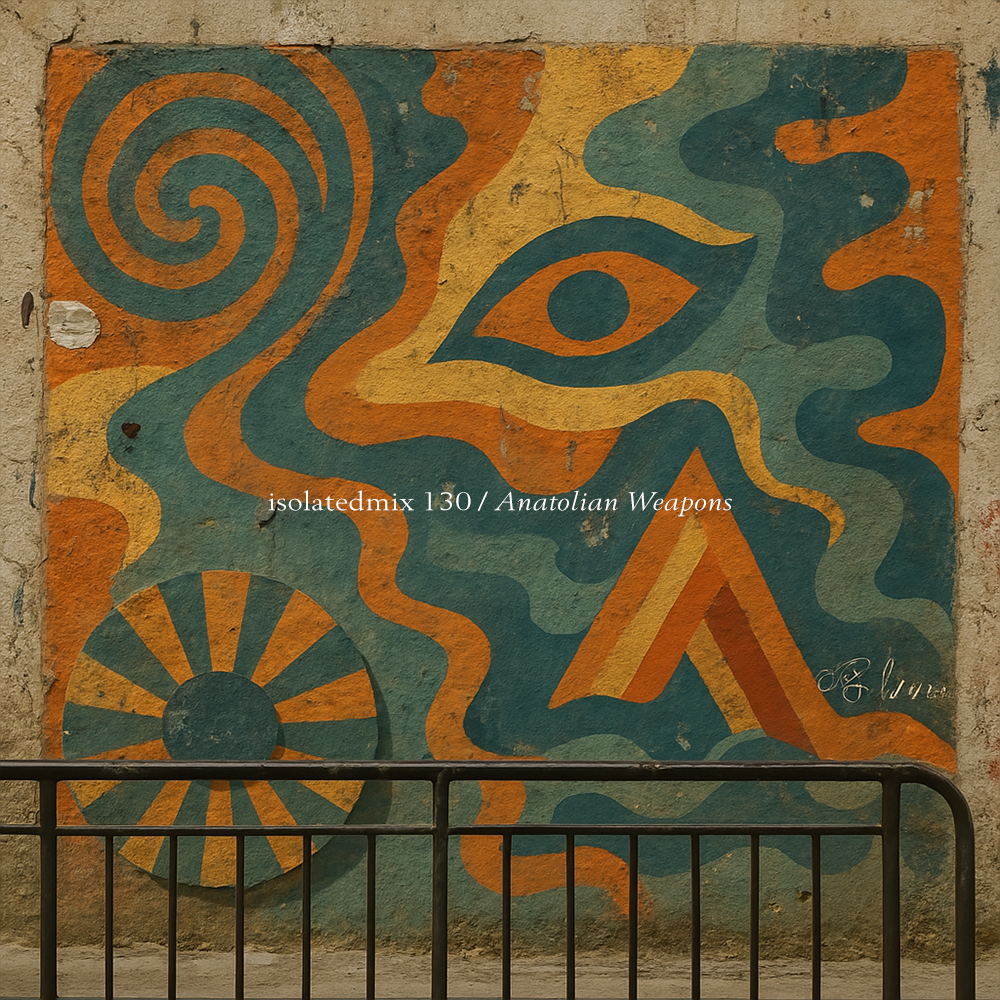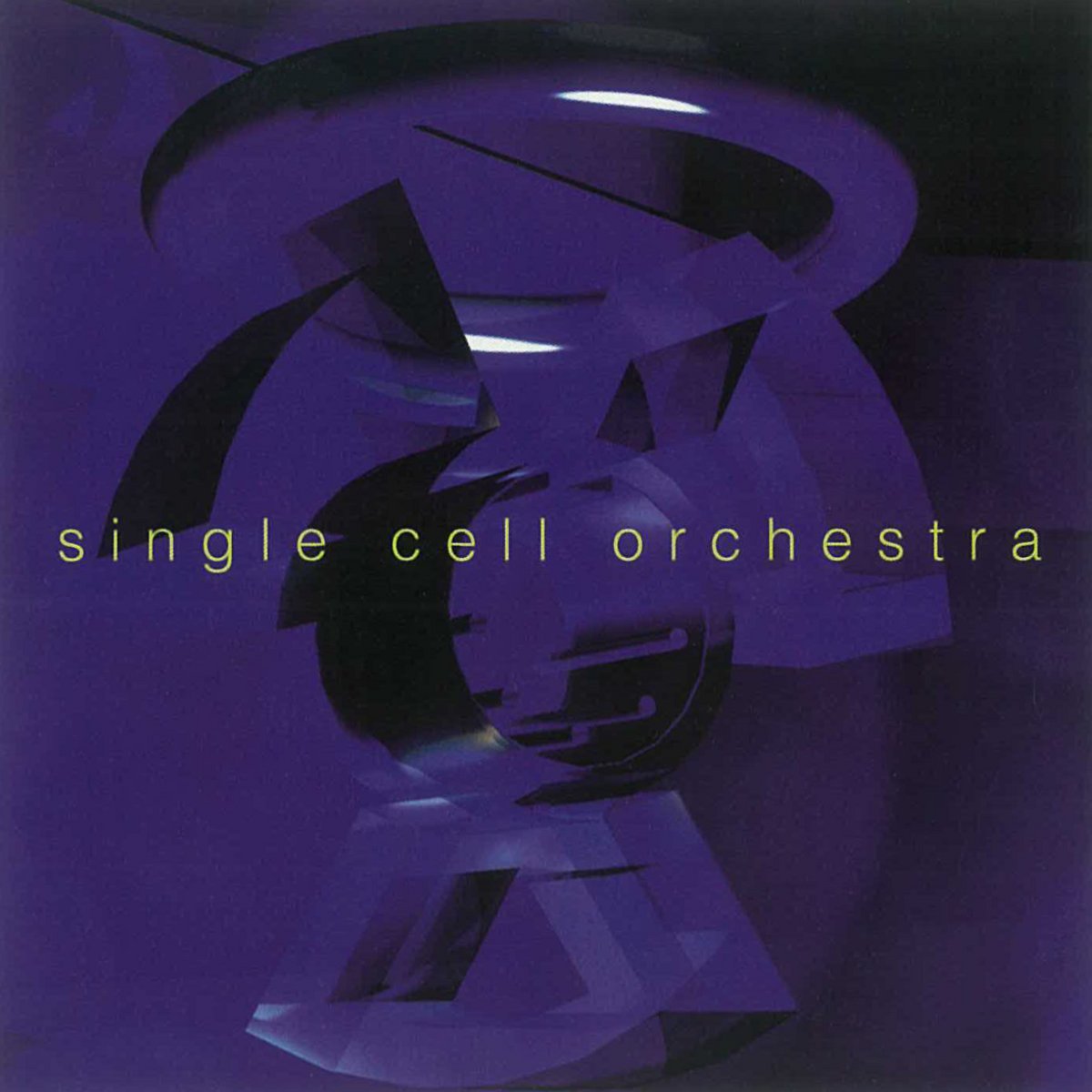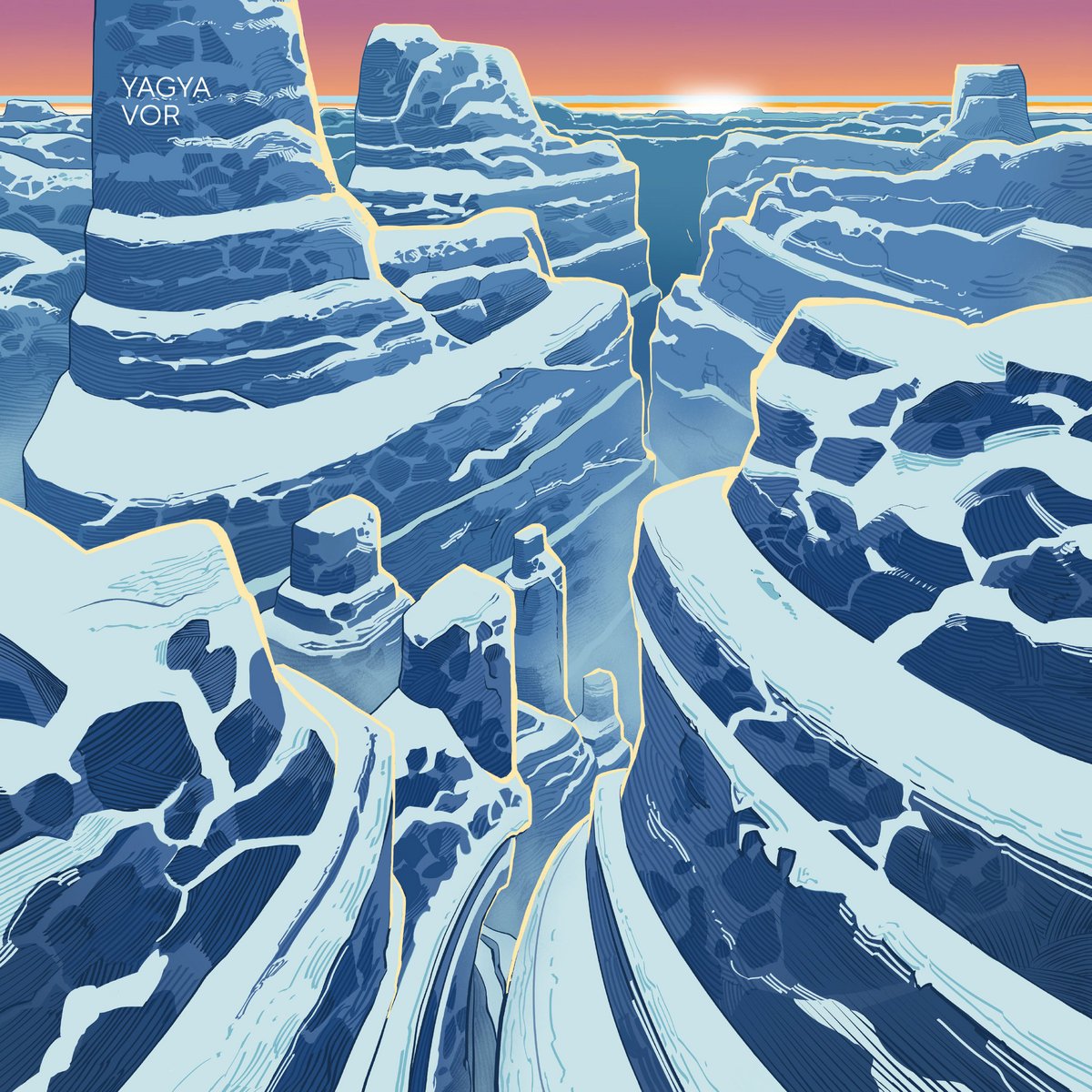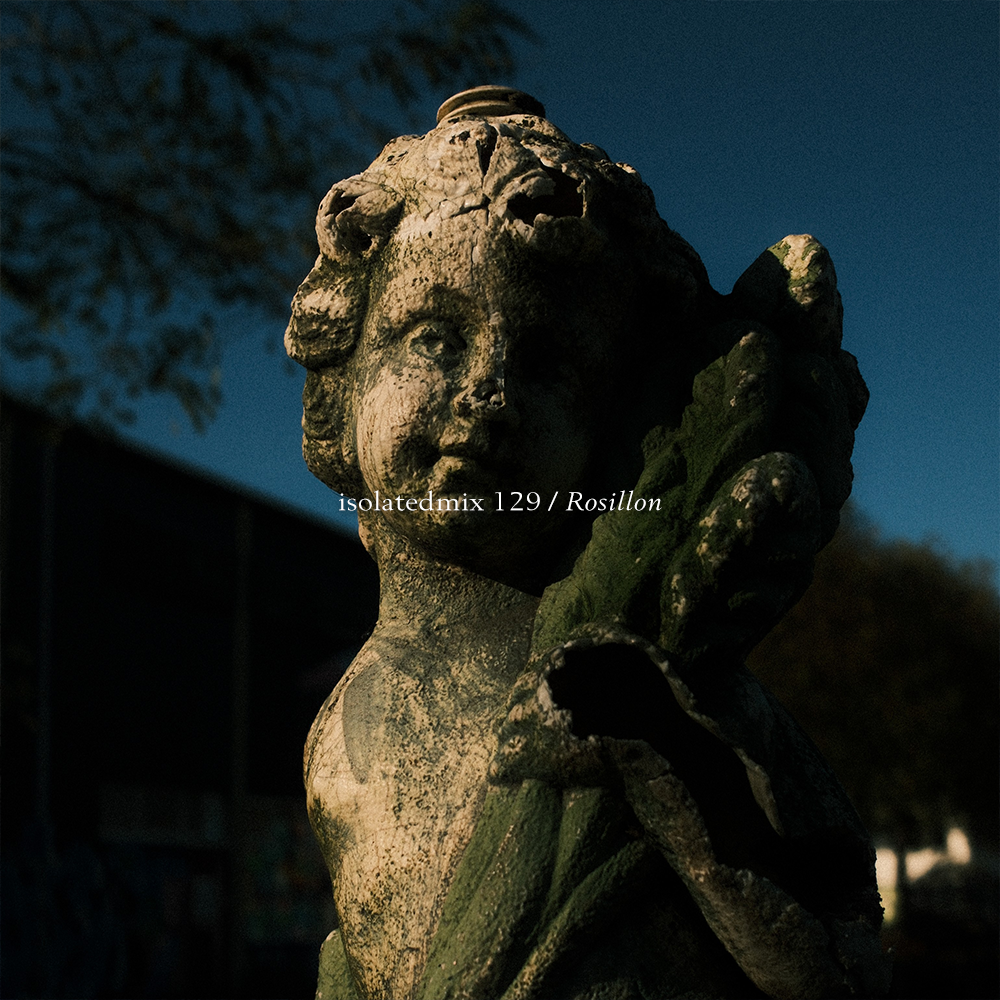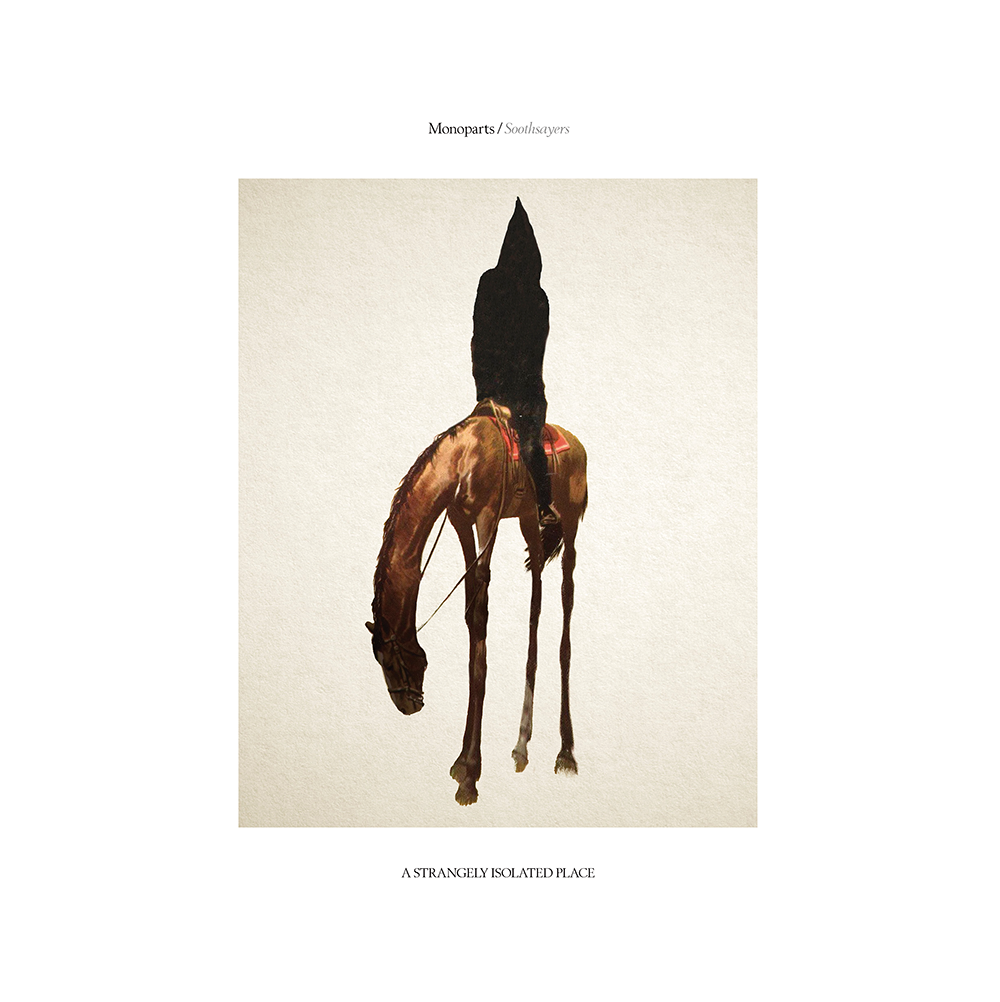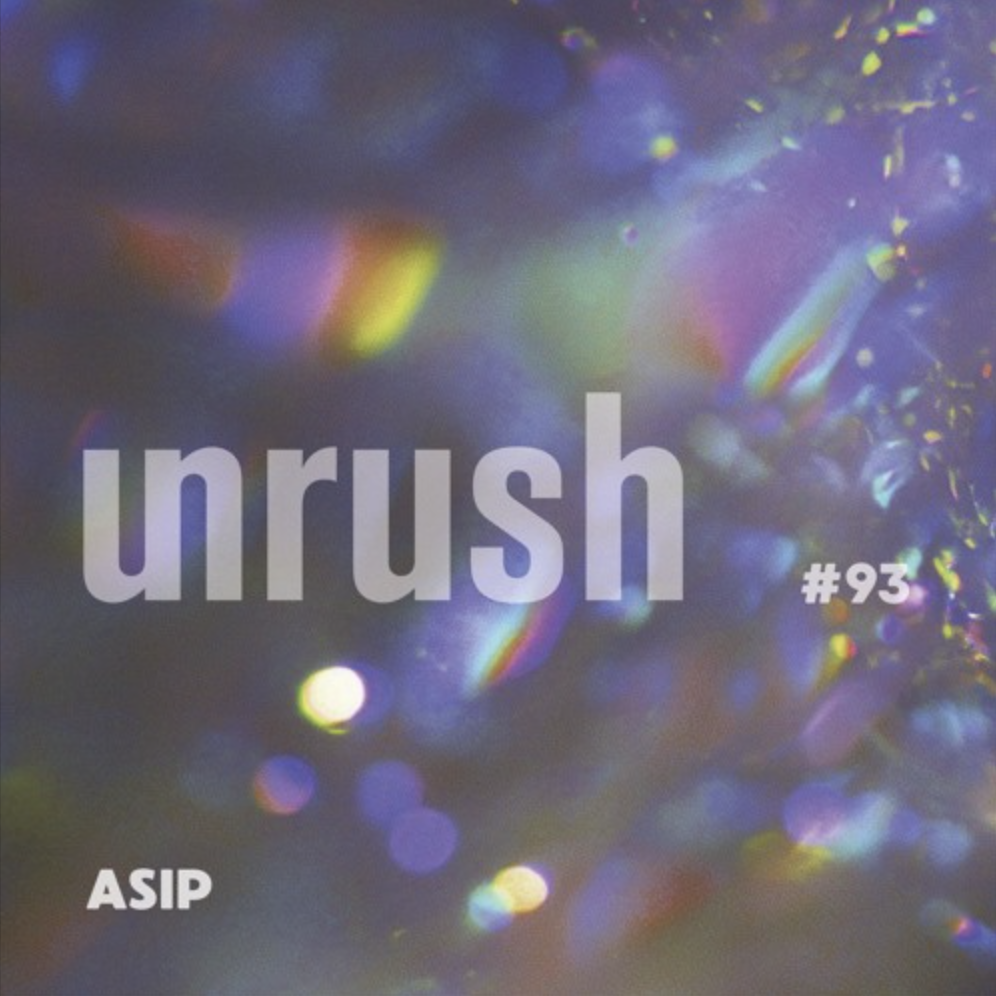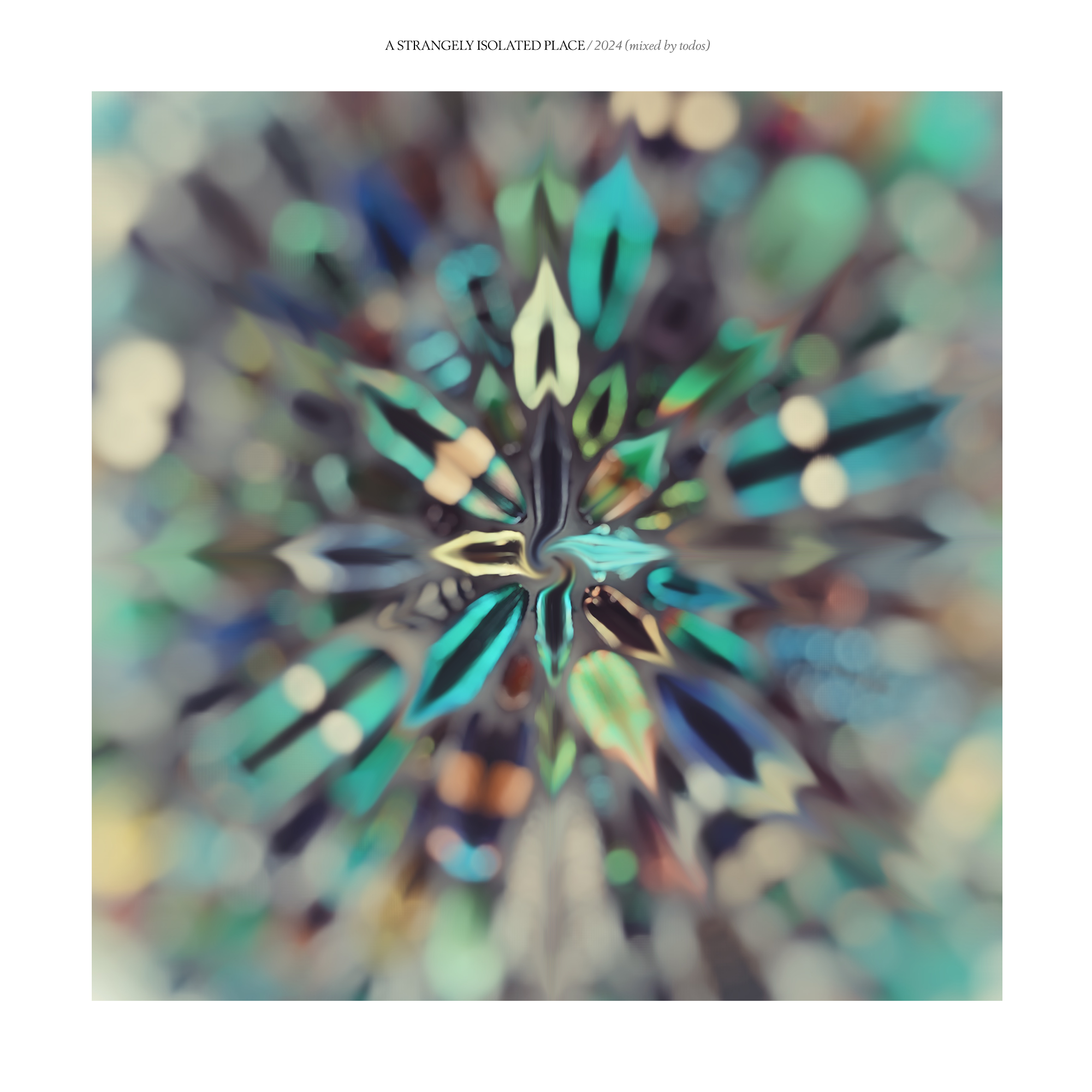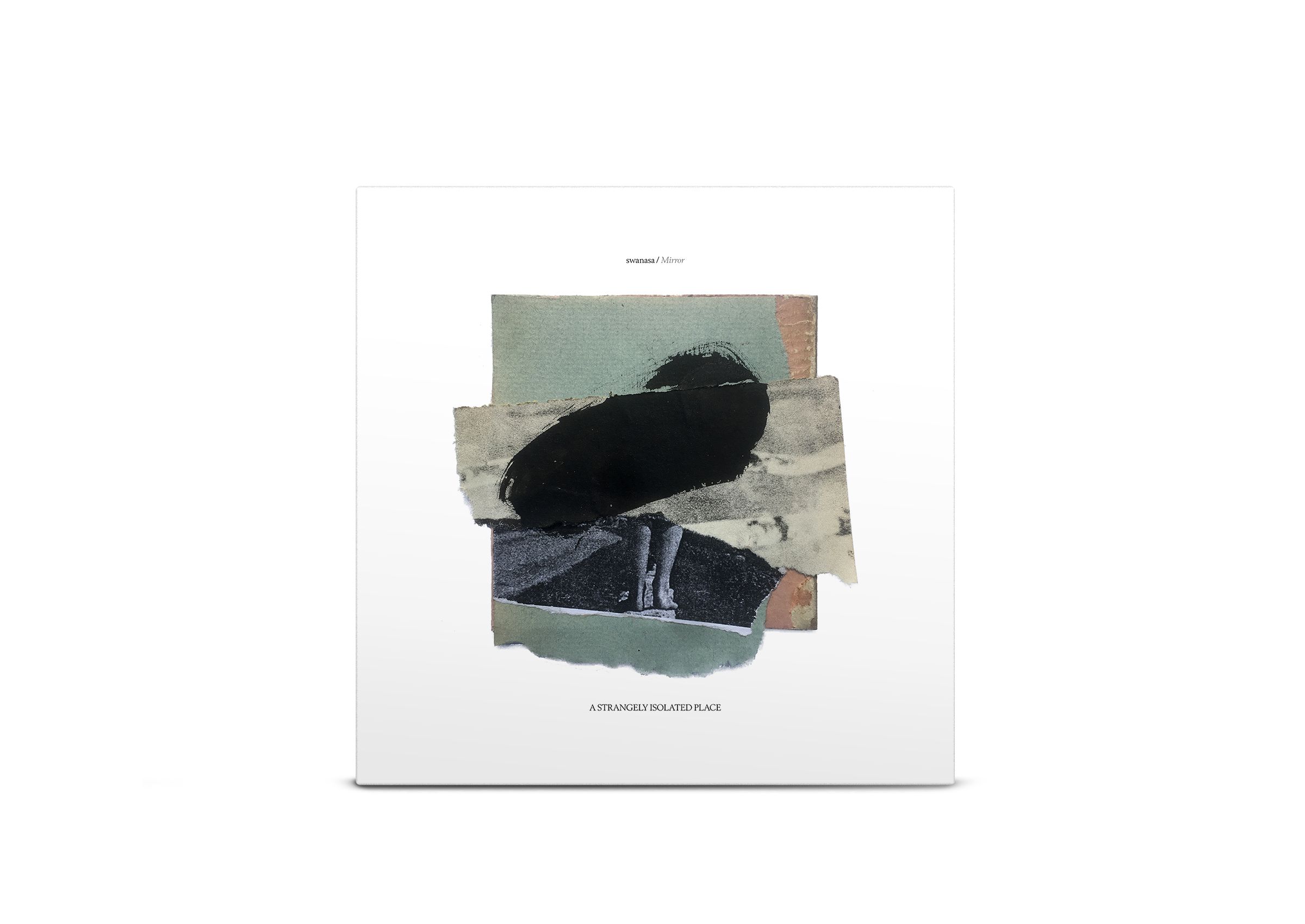Matt Xavier has been a friend of mine for many years now. A fellow music obsessive and trusted voice when it comes to all things ambient, techno, and beyond, we finally managed to meet in person while I lived in Los Angeles, and we stayed connected over music ever since.
We’ve swapped stories about pressing vinyl and running labels, and he was the reason I first crossed paths with Joel Mull (Damm) at one of his gatherings held at a beautiful Topanga home. It was a serendipitous moment that still echoes today.
A proponent for the deeper layers found in music, Matt has since become a practician, ambassador, and pioneer for psychedelic soundtracking. Along the way, he shared tracks from ASIP and other labels that were influencing and guiding his private sessions, shaping the grand masterpiece we present to you today. As his practice deepened, we exchanged many texts discussing his ambition to publish a book about his unique experience and include an accompanying mix on ASIP.
Matt’s new book, ‘The Psychedelic DJ: A Practical Guide to Therapeutic Music Curation and Psilocybin-Assisted Therapy’, is a groundbreaking manual for anyone looking to bridge sound and healing. Whether you're a clinician, a DJ, or just someone who knows the power of a well-placed track, Matt’s work will likely reframe how you think about music’s role in inner journeys.
His isolatedmix is a fully formed and accompanying ‘Protocol’, which is an example of one of his many guided sessions, referred to as “therapeutic DJing.” Psilocybin Therapy Protocol v1.22a, distills his craft and evolution in this practice for us all to dip into at a surface level, providing a peek into what are very personal worlds prepared for his clients.
Alongside the mix, Matt joins us for a deep-dive interview, discussing his new book, his transition from rave culture to guided sessions, his real-time curatorial method and how music, when chosen with care, can become a tool for transformation.
Listen on Soundcloud, the ASIP Podcast or the 9128.live iOS and Android app.
~
Tracklist | Bandcamp Playlist to support the featured artists
1. Jon Hopkins – 1/1 Singing Bowl (Ascension)
2. Marconi Union – Weightless Part 1
3. Neel, Voices From The Lake – Planatia
4. Helios – Penumbra
5. 36 & awakened souls – Take Me By The Hand (awakened souls - Acid Dream Version)
6. poemme – awning ~ under the willow tree
7. zakè (扎克) – 000607053 OTS3 [Solar]
8. awakened souls & From Overseas – Migration
9. awakened souls & From Overseas – Certainty Of Tides
10. 36 & awakened souls – Passing Dreams
11. Desert Dwellers – Lotus Garden Spaces
12. Disneynature Soundscapes – Jellyfish Atmosphere (BATHROOM BREAK)
13. Endless Melancholy – When I'm With You
14. Archivist – Photosensitive
15. Jens Buchert – Milano
16. Endless Melancholy & Black Swan – Forever In A Moment
17. Gelka – Ambient Impressions Vol 2 Mashup feat. FredAgain/NilsFrahm/Fejká
18. Lav – Collaborative Survival
19. Unknown – SMD_60_Bb_Oceanic_FX_Long_Surf EDITED
20. Lisa Bella Donna – Crystal Mountains (Matt Xavier EDIT)
21. Alucidnation – Skygazer
22. Wagogo Treeboga – Dream on
23. Poemme (Ed Harrison) – Out (Poemme remix)
24. John Beltran – Lose You
25. John Beltran – I Can Chase You Forever
26. Bluetech – Resonating Heart
27. Chicane – Early
28. Synkro – Midnight Sun (Helios remix)
29. Synkro – Movement
30. Carbon Based Lifeforms – Clouds
31. LF58 – Evocazione/Contatto/Risveglio
32. Liquid Bloom & TRIBONE - Interbeing (Telepathy Remix)
33. Federico Durand – El pequeño zorro colorado
34. alucidnation – All at Sea
35. Slow Meadow – Upstream Dream
36. Endless Melancholy – Expand
37. Orbital – Belfast (ANNA Ambient Remix)
38. Slow Meadow – Fake Magic Is Real
39. Helios – Halving The Compass (Rhian Sheehan Remix)
40. Lusine Icl – Stones throw
41. Slow Meadow – Pareidolia
42. Jon Hopkins – Immunity
~
Interview with Matt Xavier, Integrated Psychedelics
Author of The Psychedelic DJ: A Practical Guide to Therapeutic Music Curation and Psilocybin-Assisted Therapy [Buy Paperback] [Buy hardcover]
ASIP: You come from a place of passion, DJing, and running labels. What impacted or influenced the shift into the psychedelic space with music?
Matt: I’ve been passionate about pairing music with life since I was very young, but I especially remember the very first time I ever stepped onto a dancefloor in 1993 at NASA, the legendary rave club in downtown New York City. From that point on, I knew I just had to be involved. I started throwing raves, and eventually became a psychedelic DJ during what I still believe was the most influential time in dance music history. The 90s were a hedonistic blast, especially our groundbreaking psychedelic trance events at the Shelter, but such debauchery also came with some downsides.
I ended up burning out at the turn of the millennium and went sober from 2000 to 2003. That time helped me fall back in love with myself, but I also fell out of love with New York. I moved to LA to be near my friends in Moontribe, who I’d gotten close with in the late 90s. That chapter in LA led to years of nightclub events, DJ sets, and running our techno label, Railyard Recordings. They were wildly fun times, but honestly, LA’s backstage rat race wore me out. Financially, it didn’t really hold up either, so I knew I had to make a change and find something that could carry me, and possibly a family, into the next chapters of my life.
In 2009, I decided to go back to school to become a counselor. I’d had a ton of personal experience with therapy by then, mostly from working through childhood trauma and recreational or problematic drug use during my teenage years. I worked full time as an addiction counselor during the oxycontin and heroin epidemic of the 2010s, and by 2015 the burnout was getting hard to manage. That’s when I decided to revisit psychedelics but this time intentionally, and with a more therapeutic approach.
A few years later, the burnout finally caught up with me. I reached out to a friend who was a therapist working on the MDMA studies at a local university, and they pointed me toward the growing psychedelic integration community. The first time I walked into that space, it felt like home. Not just because it reminded me of my work as a group therapist, but also because of my deep history with psychedelics from the 90s rave and psy-trance scenes. It was a perfect match.
I immediately started seeking training and built out a private practice focused on integration work. That quickly evolved into guiding with psychedelics and music. And at some point, my wife pointed out that I hadn’t actually quit DJing like I thought I had back in 2017. I was just doing it differently. I wasn’t playing to or seeking crowds anymore. I was DJing for one person at a time, what I’ve always called an “audience of one.” And the sets I’ve played in that context have, in many ways, offered more meaning and healing than anything I ever experienced on a dancefloor.
Caught catching up in the garden with Matt’s new book
ASIP: I’m aware this type of practice can come across as very “hippy-dippy shit”, but you approach it through a serious music background. Can you explain, for anyone new to this how your approach differs from the stereotypical approach?
Matt: Oh wow, I totally get that. It’s understandable. Psychedelics still get looked at through the lens of “hippy-dippy shit,” especially because of everything that happened in the 60s and 70s, and how effectively the government programmed society to see psychedelics as ridiculous or unserious. And to be fair, some of that reputation was well earned, and that goes for the ridiculous fashion and antics of ecstasy-rolling ravers of the 90s too.
The way psychedelics were presented during both counterculture movements didn’t exactly help make them look medicinal or appealing to the average person. Hopefully the intentional, therapeutic, research-based approaches being taken these days are starting to change that narrative across the board.
As for the stereotypical approach... I’m honestly not even sure what that means anymore, because my colleagues and I all work in such different ways, sometimes radically different. But if we’re talking about my approach, and what I lay out in the book, I’d say it’s more intentional, more clinical, and more therapeutic, with aspects of spirituality mixed in. It’s not recreational, though there’s nothing wrong with recreating oneself, and it’s definitely not counterculture or political.
The focus of my practice is helping clients safely explore psychedelics to address whatever they’re working through when they arrive. That means looking at both conscious and unconscious drives, in a space that’s safe and clinically informed. I do a full screening and assessment before we begin to make sure someone’s a good fit. Then we do two or three 90-minute prep counseling sessions, and eventually a full journey day, which usually includes a nine-hour arc with a four-hour live DJ set to support their experience.
It’s a serious, detailed, and thorough process that also leaves space for enjoyment, if that’s what the client needs.
ASIP: As you mentioned, you’re approaching it differently from a lot of other psychedelic guides. You’re actively DJ’ing, curating music live during these journeys. Can you talk about your process more?
Matt: Yeah, one of the things I kept seeing in this field were guides who would just pull playlists off Spotify and hit play, hoping the client would be okay with it... and then being shocked when neither the client nor the guide were satisfied. I was never interested or willing to take that chance. And thanks to my background as a DJ, I didn’t have to.
That’s where I started developing something I now call Therapeutic Music Curation. It’s a practice where music is treated like medicine, just like any other consciousness-altering substance. I think of each track as a sonic compound. I collect them, listen to them in different states, get to know their traits, and figure out how they might support a particular client’s intention.
Then I build a rough arc based on what we’ve uncovered during screening and preparation, and align the music to the qualities of the first four stages of the psilocybin experience — the hike, the climb, the summit, and the descent. It’s kind of like an internal therapeutic mountain-climbing expedition, with mushrooms and music doing their magic..
If you want to compare it to DJing, it’s a lot like prepping your record box before you head to the club. You have a general idea of what might work based on the space, the sound system, the time slot, and the vibe. But as any DJ knows, once you walk in and feel the room, all your plans can go out the window. That’s where the magic, and the real skill, comes in.
That moment of adaptation is what I call Psychedelic Soundtracking, the real-time adjustment of the “set” based on what’s actually happening in the room, emotionally and energetically. I’m watching how the client is presenting. Are they crying? Laughing? Silent? Restless? I’m also tracking my own reactions in the field, and using all that information to shape both the sound and the music in response. That’s the head and the heart of it.
Therapeutic Music Curation is the prep. Psychedelic Soundtracking is the execution. And together, that’s what I call Therapeutic DJing, the intentional use of music before, during, and after the session to support the client’s inner process and healing.
ASIP: What does the onboarding process you mention look like?
Matt: Psychedelics are incredibly powerful tools that should be used safely and wisely, preferably by trained professionals, shamans, or experienced psychonauts. To prevent unwanted harm, it’s essential to screen all prospective clients before welcoming them into my practice. That process helps both the client and me figure out if we have rapport, and whether we’re a good fit to work together in such a vulnerable capacity.
Equally important, and maybe even more so, is assessing who isn’t a good candidate for this work. That includes people with certain mental health conditions like bipolar I, schizophrenia, psychosis, borderline personality disorder, or active substance use disorder. I also screen for physical issues that could complicate things, like heart conditions, stroke history, seizures, asthma, and so on. Ruling out those risks is essential, both ethically and for the client’s safety, and mine.
The screening usually happens weeks before the first prep session. Once we begin, we work closely for a few weeks leading up to the journey, and then again afterward for integration. The client isn’t the only one stepping into a vulnerable space, we’re both doing that. Trust and safety are non-negotiable.
ASIP: How do you react as a “DJ” during the session? How are you reading the client in the moment?
Matt: Like I said earlier, I call that part Psychedelic Soundtracking. It’s the live, real-time response to what’s unfolding in the room. It’s how I adjust the music and the energy of the setting based on how the client is showing up, through their words, their silence, or their emotional state.
I might sketch out a rough plan beforehand similar to filling my record box, but as we learned in traditional counseling, I try not to arrive with a fixed agenda. That kind of rigidity can pull you out of attunement. You might miss what’s actually happening in the moment. So I see it more like a choose-your-own-adventure book. The client’s experience shows us what page to turn to next, and I meet them there musically, just like we do on the dance floor.
ASIP: What are the emotional or energetic markers from beginning to end of your sessions, and how do you approach curating for those?
Matt: At the beginning, during what I call the “Hike”, or what others might call the onset, things are usually quiet and restful. The client is often meditating or simply lying still, waiting for the effects to come on. The music is subtle and grounding, the kind of sound that helps you settle in and feel safe, like you're approaching basecamp.
Then comes the “Climb,” which is where the medicine starts ramping up. This is when emotions begin bubbling up such as crying, laughing, yawning, trembling, shifting around. That’s when I start slowly increasing the energy, emotionality, or psychedelic quality of the music. But it’s not about pushing, it’s about supporting the rising effects and helping them make the climb toward the peak.
Next is the “Summit,” the peak. This is when the medicine is at full strength, and ego dissolution can happen. For some clients, it’s a storm of emotion. For others, it’s total stillness. Either way, I usually pull the music way back during this time. There’s a kind of reverence in that moment that I try to honor. The music becomes very spacious. I leave room for the imagination to soar.
After the peak, we enter the “Return,” or descent. This is when the medicine begins to lose strength and agency starts coming back online. Clients might begin to move again, process what just happened, or begin noticing what’s unfolding as they slowly return to their senses. The music reflects that with something melodic and comforting, often with a feeling of homecoming. This is a great phase for what I call “music for remembering.” It helps the client begin to make sense of what they just experienced.
ASIP: Can you explain the different types of music you use, and what mixtures or styles usually work best and what doesn’t?
Matt: Ah, the notorious genre question. Well, I’ve got a soft spot for the classics such as trippy electronic ambient from the ’90s chillout universe, modern neoclassical with lush synths, psychedelic downtempo, and a lot of expansive, cinematic soundscapes. But for me, it’s less about genre and more about emotion and visual enhancement. I lean into music that has emotional depth and visual texture. I need to feel it in my body and see it in my mind. It has to stir something, whether that’s ache, awe, release, or some associated memory.
One thing I’ve noticed — and this might surprise some of the more minor-chord–leaning dancefloor DJs out there — is that I often use major chords and melancholic sublimation in sessions. You can hear this approach in Psilocybin Therapy Protocol 1, which I describe more as “The Light.” This protocol is typically used in early sessions, especially with new clients. The music holds a tone of beauty, grace, and uplift, not in a naive or saccharine way, but in a way that gently invites the heart to open. It’s music that’s both sad and beautiful. Sublimative. It doesn’t deny pain, it transforms and resolves it.
This kind of music resonates with the core human paradox: the struggle and the gratitude of being alive at the same time. For many clients, especially early on, that emotional tone helps them soften into the experience. It creates a container where the nervous system can feel safe enough to let go. It’s the sound of surrender, not force.
On the other hand, Psilocybin Therapy Protocol 2, which I call “The Shadow,” leans into darker, heavier, more introspective psychedelic material with minor chords, tension, and the kind of raw emotionality that meets people deep in their grief, anger, regret, or trauma. These tracks are often used with experienced journeyers or when a client is ready to confront deeper material. It’s still intentional, it’s not “dark for the sake of dark”, but it meets the psyche where it’s at, and it creates a necessary counterbalance to the more major-leaning, sublimative compositions that I’ve found effective for therapeutic work.
What doesn’t work for me is dry “psy-muzak” that lacks energy or sizzle. Music should ignite the senses, spark curiosity, and take you somewhere unexpected. I avoid tracks that feel too safe or lack depth, intensity, or psychedelic flavor. I’m especially mindful of overly dark, twisted, or unnecessarily heavy beat-driven material (unless specifically requested), as it can easily overwhelm or distract in such an intimate, emotionally open therapeutic space. Keep in mind, this is all highly subjective.
At the end of the day, I’m not choosing music to impress a crowd, I’m choosing it to support the transformation of that audience of one that I previously mentioned. That inspires very different selections than what you’d hear in more underground circles. And that means trusting the emotion more than the genre.
ASIP: Can you share a track or a moment in a set that continues to resonate with you, something you’ve returned to again and again?
Matt: Yeah, a few come to mind from Audio Protocol 001. For the onset stage, “Take Me By The Hand (Awakened Souls – Acid Dream Version)” by 36 & Awakened Souls. Cynthia’s vocals and James’s 303 lines are just... divine! It hits that emotional place where people often start crying, not out of sadness, but from that deep inner shift that happens when the medicine starts to open the heart.
Then around the two-hour mark, often when a booster might be kicking in, I’ll bring in something like “Out (Poemme Remix)” by Ed Harrison or “Iliad” by Malibu. Those tracks are pure sublimation: sad but beautiful. They hold sorrow and hope in the same breath, and that kind of emotional container really helps people process what’s surfacing.
During the descent phase of Protocol 1, I mix “Expand” by Endless Melancholy with the ANNA remix of “Belfast” by Orbital. That pairing was originally inspired by a live session with a client years ago, and the reaction was incredibly powerful, it even brought me to tears. It still gives me chills to this day whenever a session calls for it. Together, those two tracks feel like a triumphant return, a kind of emotional homecoming. And that ANNA remix of Orbital’s classic Belfast really hits those “music for remembering” nostalgia buttons.
And that’s the goal, not just to bring someone back, but to bring them back home, with self-reflection, meaning, and celebration.
ASIP: There’s a lot of talk about “set and setting.” What do people often overlook when preparing for, or recovering from, a journey? What are people most surprised about?
Matt: The number one surprise is always how different the journey ends up being from what they expected. People say they have no expectations but of course they do. We all do. And then the medicine shows them something totally unexpected. Sometimes they’re shocked by how powerful it is. Other times, they’re amazed at how safe or courageous they feel when they assume they’d be terrified.
That’s always my favorite moment: when someone realizes they’ve reconnected with a part of themselves they forgot was even there. That’s the real magic.
In terms of preparation, a lot of people forget to start living the life they want on the other side. They wait for the journey to fix them. But I encourage clients to start having conversations with their future selves to ask, “What should I be doing now to get ready for who I’m becoming?” It’s like tending the garden before the rains come. You clear the weeds, loosen the soil, and plant the seeds of intention. Then the medicine knows where to land.
And then there’s the basic stuff: avoiding alcohol, stepping back from news and social media, doing breathwork, staying mindful. These small choices really do help the nervous system prepare to navigate the psychedelic space.
Post-journey, people often think the afterglow will last forever. It won’t. The high wears off. Life gets lifey again. That’s why integration is crucial. Psychedelics aren’t a fix. They plant seeds, but you still have to water them.
We go over all of this in the screening and prep sessions. The journey is just one part of the process, but it’s everything around it that makes it sustainable.
Matt Xavier (center), Joel (2nd from left) and I with friends at one of Matts parties in Topanga. Photo by Jill Sutherland.
ASIP: We’ve previously talked in depth about how the practice of curating music as a guide is hard to protect, people can copy your sets or your tracklists, for example. So what makes a guide special beyond musical choice?
Matt: It’s true that in this day and age, you can’t really guard your IP like we did back in the day such as covering our records to fend off curious trainspotters. Everyone has access to the same tracks now, and artists are getting paid less and less as streaming takes over. So spreading the word is essential to the growth of the artists who make the music we use in sessions. That’s part of the reason I’m so vocal about giving credit to the artists I use and directly supporting them whenever possible.
But what really makes a guide special isn’t just the music. It’s how you show up. It’s your ability to attune. To sense what’s needed. To recognize that music, like a psychedelic, is a medicine. And that your presence, your pacing, your sensitivity, all of that becomes part of the treatment.
A guide needs to know how to work with both the music, the moment and the psyche. They need to understand trauma. To regulate their own nervous system. To hold space for whatever shows up, whether it’s grief, rage, laughter, silence, or pure cosmic awe.
And honestly, I think anyone doing this work should have at least some training in counseling or psychology. It doesn’t have to be academic, but you need to understand how the human psyche works and how to guide and counsel someone who is trusting you with their most vulnerable states. Otherwise, you’ll be unprepared when the real material surfaces, and you can unintentionally do harm.
ASIP: What are some of the most enlightening, unexpected, or just fun outcomes of your sessions you’ve seen over the years?
Matt: I love that question. There are so many. The most enlightening thing, for me, is just the privilege of sitting with someone who’s opening themselves up that deeply. It’s sacred, and it never ceases to amaze me. To be trusted in that way, to be invited into that kind of vulnerability, it still humbles me every time.
There’ve been moments where people just erupt in tears, and five minutes later they’re laughing uncontrollably. I remember one session in particular, which I wrote about in the book, where the client went from deep sorrow and grief into a spontaneous outburst of joy. I followed him musically, moving from “Forever In A Moment” by Black Swan & Endless Melancholy, and then dropped a custom edit of Junkie XL’s “Intergalactic Space Travel.” The energy exploded with color, and that supported him into full catharsis. I followed that with a beatless track called “Lunar Landscape” by Sacred Seeds to help him land again and integrate that emotional purge. He said afterward it was one of the most cathartic experiences of his life.
Or a more recent session, where the client arrived saying they were excited and had prepared to go deep. From the start, they kept asking me to turn the volume up, and if you know the Adam Audio S3V monitors, you know they can get proper loud. I was stunned at how clearly the client knew what they needed, not just to enjoy the music and the experience, but to actually break through something. I remember giggling to myself as they kept yelling for more volume. It was wild, and totally inspiring! Not only did it help them push through their own blockages, it helped me realize I’d built up some of my own limitations around what’s “allowed” in a session.
Sure enough, the volume amplified the psychedelics and helped them access deeper levels of release. Like the client, I was deeply humbled.
And that’s the thing, to be allowed to witness these kinds of moments, to be part of it in any way, I don’t take it lightly.
ASIP: What advice or recommendations would you give to any DJ who wants to apply some principles of your practice to their own sets, maybe in more intimate or personal settings?
Matt: First and foremost, move slowly. Get properly trained, and do your own deep work before guiding others. Study psychology, counseling, trauma and, of course, psychedelics and psychedelic guiding. Understand what it truly means to hold space, and know your own limits. This will help you recognize who you can, and shouldn't, be working with.
Curate your therapeutic medicine bag. Go through your music library and pull out the tracks that have helped you in difficult moments, the ones that comforted you, inspired you, and made you feel more human. Find the intimate instrumental pieces you turn to when you're alone. These are the sounds that will serve as sonic tools in your practice.
This isn’t a dancefloor so don't get caught up in beatmatching; focus instead on emotion and vision. Learn every nuance of your tracks, their qualities, moods, and shifts. Know which ones calm, which ones activate, which ones expand, resolve, or which ones are trippy. Think about how each song might align with different phases of a psychedelic journey, and allow yourself to experiment with the fun of soundtracking the various moments of your life.
Above all, recognize the sacredness of this work. When someone enters a psychedelic state, they are profoundly open, and you hold responsibility for their safety. The music, medicine, and counsel you provide can either support their healing or add to their struggle. That weight should never be taken lightly.
As the saying goes, “Go slow and dose low. You can always take more, but you can't take less.” Stay humble. Don’t set out to save the world before you know what you’re doing. Listen deeply to your music, your medicines, and most importantly, your clients. Because in the end, they are trusting you with the most vulnerable parts of themselves, and that is truly an honor in this lifetime.
ASIP: Given this mix is named Protocol v1.22a, can we assume there is more to come?
Matt: Psilocybin Therapy Protocol 2, will be available via my website and SoundCloud. I like to call this, “The Shadow,” as it leans into darker, heavier, more introspective psychedelic material with minor chords, tension, and the kind of raw emotionality that meets people deep in their grief, anger, regret, or trauma. These tracks are often used with experienced journeyers or when a client is ready to confront deeper material. It’s still intentional, it’s not “dark for the sake of dark”, but it meets the psyche where it’s at, and it creates a necessary counterbalance to the more major-leaning, sublimative compositions that I’ve found effective for therapeutic work.
~
May/June 2025.
Matt Xavier | Website | Soundcloud | Instagram







